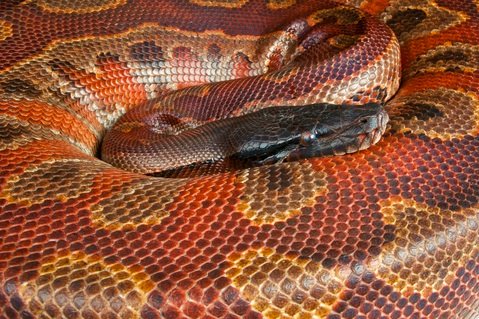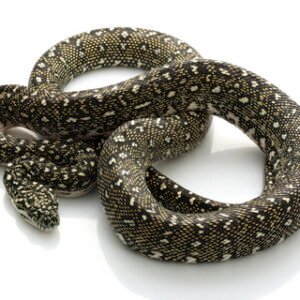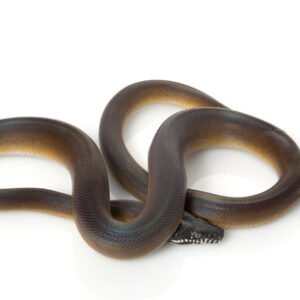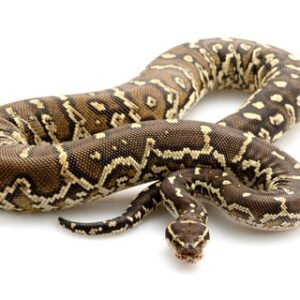Introduction to the Red Blood Python
The red blood python, scientifically known as Python brongersmai, is a significant member of the pythonidae family. This non-venomous constrictor snake primarily inhabits the lush rainforests of Southeast Asia, notably in regions of Indonesia and Malaysia. The red blood python is renowned for its striking appearance, characterized by vibrant hues of red complemented by dark patterns, creating a visually captivating display that appeals to both wildlife enthusiasts and exotic pet collectors alike.
This remarkable snake typically grows to a considerable length, often reaching sizes of up to 8 feet, though some individuals may exceed this length under optimal conditions. Its robust and muscular body enables it to thrive in its rainforest habitat, where it navigates through dense foliage with agility. The coloration of the red blood python serves a dual purpose; it not only enhances its aesthetic appeal but also provides effective camouflage amidst the colorful flora of its environment, aiding in both hunting and evading potential predators.
Within the ecosystem, the red blood python plays a crucial role as a predator. It primarily preys on small mammals and birds, using its constriction abilities to subdue its catch. This predatory behavior contributes to the balance of the ecosystem by regulating prey populations. Moreover, the cultural significance of the red blood python cannot be overlooked. In various local traditions, it is often regarded with reverence, symbolizing power and mystery. Due to its striking appearance and docile nature when properly cared for, the red blood python has gained popularity in the exotic pet trade, further highlighting its fascinating appeal. This growing interest has prompted discussions surrounding conservation efforts and responsible ownership practices, emphasizing the need to protect this unique species and its natural habitat.
Care and Keeping of Red Blood Pythons
Proper care and husbandry are crucial for maintaining the health and well-being of a red blood python, renowned for its striking appearance and unique temperament. First and foremost, the enclosure must be spacious; a suitable habitat should ideally be at least 4 feet long for adult specimens to allow for movement and exercise. This species thrives in environments that closely resemble their natural habitat. Therefore, incorporating appropriate substrate, hiding spaces, and climbing opportunities is vital for reducing stress.
Temperature regulation plays a significant role in the health of red blood pythons. A thermal gradient should be established within the enclosure, with a basking area maintained at 88-92°F (31-33°C) and a cooler side at around 75-80°F (24-27°C). Additionally, humidity levels need to be kept between 50-60%, which can be achieved through regular misting and the use of water bowls. Monitoring these parameters is pivotal, as improper levels can lead to shedding issues and respiratory problems.
Diet is another essential aspect of caring for red blood pythons. They are carnivorous, requiring a diet mainly consisting of appropriately sized rodents, such as mice or rats, depending on the snake’s size. It is recommended to feed them every 1-2 weeks, with younger snakes needing more frequent meals. Understanding their feeding habits will lead to healthier growth and development.
Despite their robust appearance, red blood pythons can exhibit a range of temperaments, often misguided as aggressive. Proper handling from a young age and socialization can help mitigate defensiveness. Potential owners should be aware of the challenges that arise during breeding, as successful breeding requires knowledge of genetic pairing and care for hatchlings. As with any pet, ensuring regular veterinary check-ups can help catch any health issues early and maintain the longevity of these fascinating snakes.





